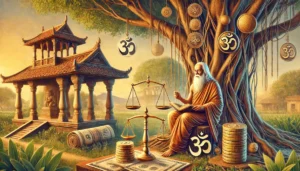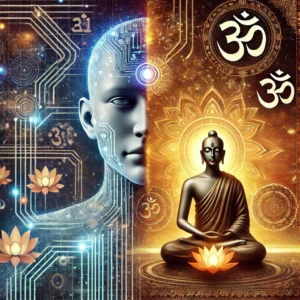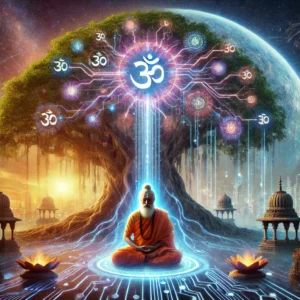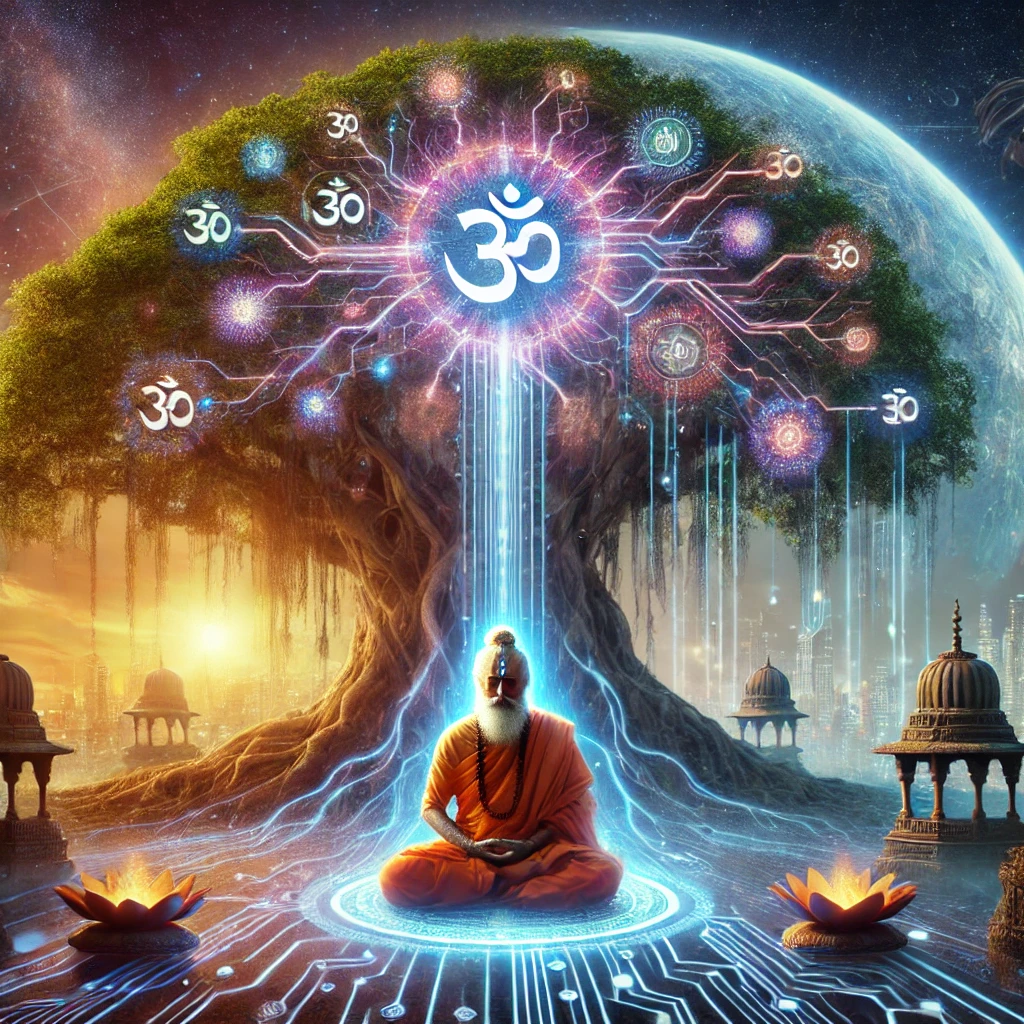
History of Swastika and om symbols
The Timeless Symbols: Swastika, Om, and Their Evolving Meanings
Symbols are the visual language of humanity, embodying profound cultural, spiritual, and philosophical messages. Among these, the Swastika, Om, and several other ancient symbols hold a unique place in history and continue to inspire debate, reverence, and reinterpretation in today’s world. This article delves into their origins, significance, and the impact they hold in the modern era.
The Swastika: From Auspicious Beginnings to Global Misunderstanding
Historical Roots
The Swastika is one of humanity’s oldest symbols, with evidence of its use dating back over 12,000 years. It has been discovered in ancient civilizations across India, Mesopotamia, Greece, and even pre-Columbian cultures of the Americas.
In its Sanskrit origin, svastika means “that which brings well-being” (su = good, asti = to be). The Swastika is considered a symbol of auspiciousness, representing prosperity, stability, and the cyclical nature of existence. In Indian culture, the four arms of the Swastika often symbolize the four Vedas, the four directions, or the four stages of life (ashramas).
In Hinduism, the clockwise Swastika represents the Sun, life, and prosperity, while the counterclockwise form (sauwastika) symbolizes the feminine energy and the goddess Kali.
In Buddhism, it signifies the Buddha’s footprints and the eternal turning of the Wheel of Dharma.
In Jainism, it is a sacred symbol denoting the four states of existence: heavenly beings, humans, animals, and hellish beings, encouraging progress toward liberation.
Table of Contents

History of Swastika and om symbols
Misappropriation and Its Consequences
The Swastika’s reputation in the West took a devastating turn in the 20th century when it was co-opted by the Nazi regime in Germany. Adolf Hitler adopted it as a symbol of Aryan supremacy, divorcing it entirely from its original meaning. This misuse not only caused widespread devastation but also led to the vilification of a sacred emblem, particularly in Western cultures.
Efforts to Reclaim the Swastika
In modern times, there has been a growing movement to reclaim the Swastika’s original meaning. Hindu, Buddhist, and Jain communities worldwide are working to educate others about its spiritual and cultural significance. For instance, during festivals like Diwali, Swastikas are drawn on doorways and used in rituals to invoke blessings.
While there is progress in restoring its ancient identity, overcoming its stigmatization in parts of the world remains a significant challenge.
Om: The Sound of the Universe
Historical and Spiritual Significance
Om (Aum), a sacred syllable, is the primal sound of the universe in Hinduism, Buddhism, and Jainism. It appears in ancient Indian texts like the Vedas and the Upanishads, symbolizing the infinite reality, consciousness, and cosmic vibration that sustains all existence.
Om is composed of three phonetic elements:
A: The beginning, symbolizing creation.
U: The middle, representing preservation.
M: The end, denoting transformation or dissolution.
Beyond the phonetic, Om embodies the metaphysical principles of existence. Its written form also carries meaning: the curves represent waking, dreaming, and deep sleep states, while the dot symbolizes transcendental consciousness.
Global Adoption
Today, Om transcends its religious roots, becoming a universal symbol of mindfulness and spirituality. It is integral to yoga and meditation practices, often chanted to harmonize body and mind. However, this global popularity raises questions about cultural appropriation, as Om is frequently commercialized, appearing on jewelry, tattoos, and fashion without acknowledgment of its sacred origins.
Other Timeless Symbols and Their Significance
The Lotus
The lotus flower, which blooms in muddy waters, is a universal metaphor for purity, enlightenment, and resilience. In Hinduism, the lotus is associated with deities like Lakshmi (goddess of wealth) and Brahma (the creator). For Buddhists, it signifies spiritual awakening, detachment, and the journey toward Nirvana.
The Trishul (Trident)
The trident, carried by Lord Shiva, represents creation, preservation, and destruction—the cosmic cycle of existence. It is also a protective symbol, signifying the triumph of divine energy over negativity.
The Chakra (Wheel)
Central to both Hindu and Buddhist philosophies, the Chakra signifies movement, change, and progression. The Ashoka Chakra, featured on India’s national flag, embodies righteousness and dharma. In Buddhism, the Wheel of Dharma represents the teachings of the Buddha.
The Kalasha (Sacred Pot)
The Kalasha, often seen in Hindu rituals, symbolizes abundance, purity, and divine presence. It is filled with water and adorned with mango leaves and a coconut, representing life and fertility.
The Yin-Yang
Though rooted in Chinese Taoism, the Yin-Yang has a universal appeal. It depicts the interplay of opposites—light and dark, male and female, active and passive—underscoring the importance of balance in the universe.

History of Swastika and om symbols
Symbols in a Modern Globalized World
In the contemporary era, symbols like the Swastika and Om have become subjects of reinterpretation. Globalization has allowed these symbols to transcend their geographic origins, fostering cultural exchange and understanding. However, it has also led to challenges:
Misunderstanding: The Swastika remains misunderstood in many Western contexts due to its association with Nazi ideology.
Commercialization: Symbols like Om and the lotus have been commodified, often stripped of their deeper meanings.
Cultural Appropriation: The use of sacred symbols in fashion and art without understanding their significance can be seen as disrespectful.
The Way Forward
Educating people about the origins and meanings of these symbols is key to preserving their integrity. Schools, museums, and cultural organizations can play a pivotal role in fostering awareness. Efforts like the World Swastika Rehabilitation Day aim to restore the Swastika’s original meaning, promoting cross-cultural understanding.
For practitioners and enthusiasts, respecting these symbols involves more than just using them; it requires understanding their context and honoring their sacredness.
Conclusion
The Swastika, Om, and other ancient symbols are more than mere relics of the past. They are timeless expressions of humanity’s quest for meaning, harmony, and connection with the divine. By understanding their history and respecting their significance, we can bridge cultural divides and celebrate the richness of our shared heritage.
As these symbols continue to inspire and guide us, they remind us of the universal truths that transcend time and geography—a testament to the enduring power of human spirituality and creativity.
Explore more about ancient symbols and their relevance in today’s world at Prachin Sanaran Yuga. Keep the wisdom of the ages alive!

History of Swastika and om symbols
FAQs on “Swastika, Om, and Other Sacred Symbols: Exploring Their History and Modern Relevance”
- What is the origin of the Swastika symbol?
The Swastika has been used for over 3,000 years across several cultures, including Hinduism, Buddhism, Jainism, and ancient Greek and Roman cultures. In Hinduism, the symbol represents auspiciousness, good fortune, and the divine, and it is often associated with the god Ganesha, who removes obstacles. In Buddhism, it signifies the Buddha’s footprints and the wheel of Dharma, symbolizing the cyclical nature of life and enlightenment.
- Why is the Swastika controversial in the modern context?
The Swastika became widely associated with Nazi ideology due to its adoption by Adolf Hitler and the Nazi Party, who distorted its meaning and used it as a symbol of white supremacy, hate, and totalitarianism. This association has led to widespread misinterpretation and stigma of the symbol, particularly in the West. However, its original meaning of peace and well-being remains intact in many other parts of the world, especially within Indian, Buddhist, and Jain cultures.
- What does the Om symbol represent?
Om is a sacred sound and symbol representing the vibration of the universe and the ultimate reality in Hinduism, Buddhism, and Jainism. It is believed to be the primordial sound from which all existence emanates. Om symbolizes the interconnectedness of all things, embodying the physical, mental, and spiritual aspects of life. Its presence in meditation and spiritual practices helps individuals attune themselves to higher states of consciousness and unity with the cosmos.
- Are there other symbols with similar universal meanings?
Yes, there are numerous sacred symbols used globally, each carrying deep spiritual or philosophical significance. Examples include:
The Lotus: A symbol of purity, enlightenment, and rebirth in Hinduism and Buddhism. It grows in muddy waters, representing spiritual growth through adversity.
Yin-Yang: A Chinese symbol representing balance and duality, highlighting the interdependence of opposites in life (e.g., light and dark, good and evil).
The Tree of Life: Seen in many cultures, it represents the connection of all life, the cycle of birth, death, and rebirth, and the unity between heaven and earth.
- How are these symbols relevant today?
Despite their ancient origins, symbols like the Swastika and Om continue to hold deep significance in today’s world. They are used in spiritual practices like meditation, yoga, and healing arts to promote personal growth, mindfulness, and peace. They also appear in art, architecture, and even fashion, helping people connect with cultural heritage and spiritual traditions. In a world of rapid globalization, these symbols offer a reminder of humanity’s shared values of peace, unity, and interconnectedness.
- How should one approach these symbols respectfully?
Understanding the history, context, and cultural meanings behind these symbols is essential before incorporating them into daily life or designs. Respect for their spiritual significance should be maintained, and they should not be used inappropriately or superficially. Educating oneself about the symbol’s history and meaning can help prevent misunderstandings and misuse. For example, when using symbols like the Swastika, it’s crucial to acknowledge their original context in Hindu, Buddhist, and Jain traditions rather than their misappropriation by the Nazis.
- What are some examples of the Swastika’s positive use?
The Swastika remains a sacred symbol of good luck, prosperity, and auspiciousness in many Eastern traditions. In India, it is often drawn during religious ceremonies, weddings, and festivals, especially during Diwali, as a symbol of welcome and protection. Similarly, it is used in Buddhist temples, on prayer wheels, and during meditation practices to invoke peace and positive energy. In Jainism, it is a symbol of the four states of existence, encompassing the cycle of life, death, and rebirth.
- Why do sacred symbols vary in meaning across cultures?
Sacred symbols evolve according to the cultural, religious, and historical contexts in which they are used. The same symbol can represent different concepts depending on the worldview and spiritual practices of a particular society. For instance, the cross in Christianity signifies the sacrifice of Jesus Christ, while in pre-Christian Europe, it was often a symbol of the sun, rebirth, or fertility. These variations highlight the diverse ways humans have interpreted the mysteries of existence and the universe.
- Can sacred symbols be used in modern designs?
Yes, sacred symbols are often incorporated into contemporary art, jewelry, fashion, and architecture, but it’s important to do so with sensitivity and awareness of their origins. Designers should strive to understand the cultural and spiritual significance of the symbols they use and avoid commercializing or distorting their meanings. When used mindfully, these symbols can serve as powerful tools for self-expression, cultural appreciation, and spiritual connection in modern life.
- How can these symbols promote unity in a globalized world?
As global connectivity increases, understanding and appreciating sacred symbols can foster greater intercultural dialogue and mutual respect. By learning about the symbols’ histories, meanings, and roles in different traditions, individuals can bridge divides and develop a more nuanced understanding of human spiritual heritage. Sacred symbols, when shared and respected across cultures, can act as common ground to promote peace, unity, and shared values such as compassion, mindfulness, and interconnectedness.
- How do these symbols contribute to personal growth and well-being?
Many of these symbols hold deep meditative and transformative potential. For example, chanting “Om” or meditating on the symbol can lead to a sense of inner peace and spiritual awakening. The Swastika, when used in its original form, encourages the manifestation of positive energies and harmonious vibrations. Such symbols can serve as focal points for meditation, reflection, and personal growth, helping individuals cultivate greater mindfulness, balance, and peace in their lives.
- What are the ethical considerations when using sacred symbols in a global context?
When using sacred symbols, it’s essential to approach them with respect, particularly if one belongs to a culture or tradition that uses the symbol as sacred. It is important to avoid reducing these symbols to mere fashion accessories or marketing tools, as this can lead to cultural appropriation. A respectful approach involves acknowledging the symbols’ deep spiritual meanings and their cultural significance while using them with sensitivity, especially in multicultural and global settings.
- How can we educate others about the proper use of these symbols?
Education plays a key role in promoting the respectful use of sacred symbols. Schools, cultural organizations, and spiritual centers can incorporate lessons about the historical and spiritual significance of symbols like the Swastika and Om. Additionally, social media and content creators can help spread accurate information about these symbols to prevent misconceptions and misuse. By fostering greater awareness, we can ensure these symbols are honored in their true context.
Summary
“Swastika, Om, and Other Sacred Symbols: Exploring Their History and Modern Relevance” delves into the rich history and cultural significance of symbols like the Swastika and Om, along with other sacred emblems from various traditions. The Swastika, often misunderstood in the West due to its association with Nazi ideology, originally symbolized peace, well-being, and good fortune in ancient cultures. Similarly, the Om symbol, deeply rooted in Hinduism, Buddhism, and Jainism, represents the ultimate sound, embodying the essence of the universe and spiritual harmony.
The article also highlights the importance of understanding these symbols in their authentic cultural contexts, shedding light on their positive meanings and contributions to spiritual practices. In the modern context, the challenge lies in reclaiming these symbols from misinterpretations and ensuring they are recognized for their historical and spiritual significance.
Related Articles
- Restful Nights: Ayurvedic Remedies and Traditional Indian Practices to Overcome Insomnia and Late-Night Habits
- The Tridevi: Lakshmi, Saraswati, and Parvati – Their Roles and Powers
- “Divine Creatures of Ancient Indian Scriptures: Exploring the Role of Animals in the Vedas, Puranas, and Mahabharata”
- Nature and Spirituality: Exploring the Sacred Essence of the Himalayas, Ganga, and Other Natural Wonders”
- “Reviving the Gurukul System: Relevance and Lessons for Modern Education”
- “Exploring Greek and Indian Mythology: Similarities Between Greek and Indian Mythology “
- “Embracing Sattvic Living: Harmonizing Mind, Body, and Soul Through Food and Lifestyle”
- “Charity and Prosperity: Exploring the Concept of Daan and Its Financial Relevance in Modern Life”
- How to Build an Eco-Friendly Home Inspired by Vastu Shastra
- Comparison of Ancient and Modern Sports: How Traditional Sports Have Influenced Contemporary Games
- “Timeless Lessons from Ancient Tales: Linking Samudra Manthan and Ganga’s Descent to Modern Ecological Challenges”
- “Reviving Sanskrit: How AI is Preserving Ancient Languages for the Future”
- “Mathura: The Sacred Land of Lord Krishna’s Divine Leelas”
- Investing for Future Generations: Lessons from Indian Traditions on Legacy Building and Wealth Preservation
- “Ancient Indian Wisdom: Timeless Lessons for Tackling Today’s Climate Crisis”
- “Artificial Intelligence and Spirituality: Transforming Ancient Practices for the Modern World”
- “Gold and Real Estate in India: Timeless Assets Shaping Financial Strategies”
- Tradition Meets Innovation: The Evolution of Technology in Hindu Rituals
- End-of-World Myths: Exploring Kali Yuga in Hinduism and Ragnarök in Norse Mythology
- Garuda, Pegasus, and Dragons: The Universal Ties of Mythical Beasts Across Cultures
- “Ancient Vimanas: Mythical Flying Machines or Evidence of Advanced Technology?”
- Time Travel in Hindu Mythology: The Fascinating Tales of Kakudmi and King Raivata
- “Divine Feminine Power in Hindu Mythology: The Legends of Durga, Saraswati, and Lakshmi”
- “Divine Beings of Sanatan Dharma: The Spiritual Significance of Sacred Animals in Hinduism”
- “Symbolism in Mythological Art: Unlocking Hidden Meanings in Ancient Temple Carvings”
- “Exploring Technological Advancements in Ancient India and Civilizations: Vimana, Metallurgy, & Water Management systems”
- Unveiling the Mysteries: Ancient Temples of Sanatan Dharma , Mysterious Temples of India
- “The Scientific Knowledge of Sanatan Dharma: Ancient Wisdom Meets Modern Science”
- Ancient Indian Sports and Games: Celebrating a Legacy of Skill, Strength & Strategy”
- “Exploring the Cosmic Link: The Connection Between Astronomy and Vedic Astrology”
- The Power of Sanskrit: Unlocking the Divine Language of the Gods
- “The End of Kaliyuga: A Sanatan Insight into the World’s Final Chapter”
- Explore more articles on Prachin Sanatan Yuga.
History of Swastika and om symbols History of Swastika and om symbols History of Swastika and om symbols History of Swastika and om symbols History of Swastika and om symbols History of Swastika and om symbols History of Swastika and om symbols History of Swastika and om symbols History of Swastika and om symbols History of Swastika and om symbols History of Swastika and om symbols
History of Swastika and om symbols History of Swastika and om symbols History of Swastika and om symbols History of Swastika and om symbols History of Swastika and om symbols History of Swastika and om symbols History of Swastika and om symbols History of Swastika and om symbols History of Swastika and om symbols History of Swastika and om symbols History of Swastika and om symbols
History of Swastika and om symbols History of Swastika and om symbols History of Swastika and om symbols History of Swastika and om symbols History of Swastika and om symbols History of Swastika and om symbols History of Swastika and om symbols History of Swastika and om symbols History of Swastika and om symbols History of Swastika and om symbols History of Swastika and om symbols
